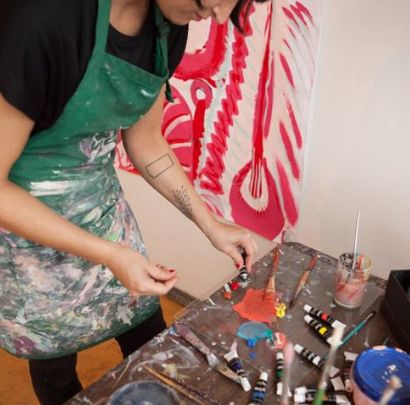Remember when you were in elementary school and painting seemed so simple when your teacher just handed you art supplies and helped wash brushes afterwards? Approaching the medium as a more mature artist, you should learn about paintbrush materials and the way to properly care for your brushes.

First, you must decide whether you will be needing soft or stiff hairs for the paintbrush. Either can be produced of natural hairs or synthetic fibers. A skinny paintbrush is ideal when you wish to do detailed work or precise painting. It helps you to definitely spread paint easily. Hard bristles on the other hand are better for manipulating thick paint. This enables you to create brush marks in the paint that may be seen for the canvas. Vincent van Gogh’s tasks are famous for this method, as evidenced by his painting The Starry Night.
Most purists will point out that natural hair will almost always be superior to synthetic fiber due to its flexibility and strength. The hair for paintbrushes originates from animals including Sable, squirrel, hog, camel, ox, pony and goat. In the event the thought of using hair from one of these animals making you squeamish otherwise you have ideological issues with this, don’t fear: modern fabric paint have fallen further and are less expensive than their natural hair counterparts.
The next task is to learn a little bit about paintbrush anatomy. The handle is often created from wood which is known as the ferrule. This props up hairs or bristles. The tip with the bristles is referred to as the toe.
When deciding which paintbrush in working order is important to know the size of the toothbrush. This is often determined by looking at various on the side of the handle. The smallest size is 00 followed by 0, 1, 2 and so on. In case you are buying online you will need to see a picture with the brush you’re purchasing. Two brushes sized the same can in fact be very different as a result of variety of bristles and also the width in the handle. This challenge could be alleviated should you shop within an actual store or are actually familiar with the manufacturer of brush.
It requires time and effort and cash to find the right paintbrush, therefore it makes sense to deal with them, which include proper cleaning after each use.
Prior to getting started, be sure to have mild soap (or turpentine if appropriate) and a few tissue. You will probably need lukewarm water and a place to dry your brushes.
Wipe over excess paint using a soft cloth or tissue. Then, rinse your brushes in turpentine if you are using oils, but use lukewarm water if you are paint is water-based. Hot water can cause the hairs of the brush to fall out. Afterwards, gently wash your brushes with soap. Rinse and repeat as often as necessary until no color arrives and your brush returns to its original color. Next rinse your paintbrush in water that is clean. Make sure you shake off the excess water after this. In the event the brushes seem misshapen, use your fingers to softly bring the brush head back towards the original shape.
Now you you will need to dry the paintbrushes. Wrap the bristles in tissue or toilet tissue while they are wet. If the bristles dry they’ll contract this way and definately will maintain their shape. Allow the brushes dry at 70 degrees. Be sure not to rest them on their head as this is another potential hazard to maintaining appropriate shape.
For more information about painting canvas check out this useful site: this site
